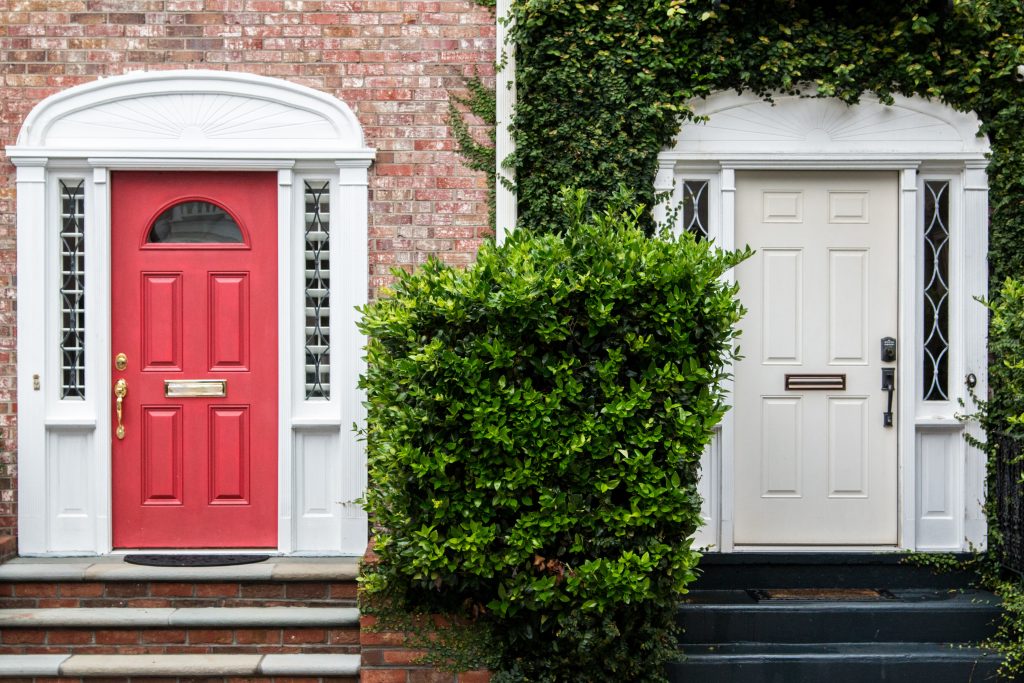6 Fascinatingly Futuristic Home Lock and Key Ideas

You are likely very familiar with modern lock-and-key systems for your house. The process is typically as follows. You walk up the steps to your door and fumble for your keys. After juggling your groceries, you manage to insert the key and unlock the door. If you have a deadbolt, you must repeat this sequence for the doorknob. If you are being pursued and need to get inside the house quickly–good luck. It will never happen.
Of course, the above scenario employs a bit of hyperbole. That said, locks can be cumbersome. Fortunately, there are a few locks and keys that are truly high-tech. These systems make current technology look antique in comparison. These systems are more secure. They are faster. They are on the way.
1. Phone as key
Forget fingerprints, which can be lifted. Properly setup, your smartphone is one of most secure devices in existence. It is so secure, in fact, that the FBI often has trouble breaking the simple login page. They have trouble because that simple login page is not simple, which makes your phone the perfect key to your home.
In the very near future, you will have the option of entering your home via voice-command. This type of door-and-lock system works exactly how it sounds. All you have to do is speak into your phone, and your door–ten steps in the distance–unlocks. Fumbling for your keys will soon go the way of rewinding rental tapes.
2. The mother ship
Amazon is the online retail behemoth poised to install Echo-based door locks that allow the homeowner to monitor and unlock their doors from a phone app. Other companies are doing this as well, but Amazon’s vision is to allow its own employees and representatives to enter your home for the purposes of making deliveries.
3. Personalized key systems
Although many lock systems are designed to keep people out, upcoming lock systems will be designed to let just about anyone in. The idea is that a homeowner will be able to install a touch-sensitive pad on the door. This sensor controls the lock, and once it is installed, the homeowner can establish codes for 20 to 50 people. In terms of access to one’s home, allowing as many as 50 people access to your home is analogous to allowing everyone in the entire world access to your home. The key to the security is that each user is tracked. Because homeowners can track user codes and because users know they are being tracked, the users are less likely to give their codes to other people or use it themselves for nefarious purposes. As such, neighbors can have access to your home when you are away, and your dog or cat will be fed on time.
4. Intelligent sensing
Eventually, having to speak a command into your phone to unlock your door will seem so laborious that no one will be able to imagine anyone ever having had to bear such a burden. Instead, this door lock will be able to recognize your approach and open the door. For instance, facial recognition has moved beyond simple facial recognition. In fact, current AI technology can identify body posture and gait. Equipped with this type of recognition, smart door locks will recognize you much as a friend would. As you approach, the door will open.
5. Hardened old school
For people who want the modern convenience of high-tech and the reliability of old-school deadbolts, a 10-key number pad allows you to set a code for your door and open it via a smartphone. Doing so will allow faster access to your home while also providing convenience.
6. Keys embedded in your body
Key fobs are common. They operate via a security code embedded in a chunk of plastic. When you wave the plastic over a sensor, the sensor reads the code embedded in the fob, and the door opens. In the near future, the fob will be replaced by your hand. Instead of carrying around a chunk of plastic, the security code will be embedded in your hand. When you wave your hand in front of the sensor, the door will open.

















